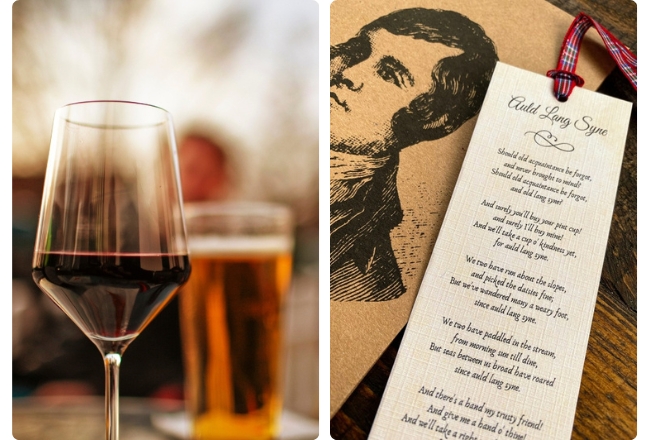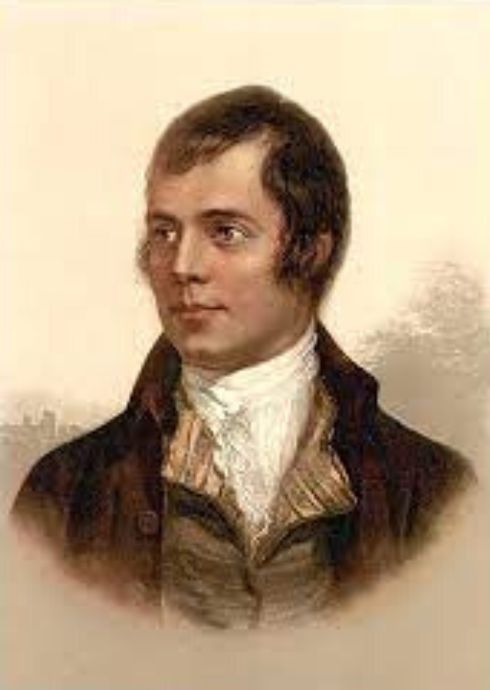
The world is filled with cherished traditions that have been passed down through generations, and This has no exception. This beloved song was originally a poem written in Scots by Robert Burns, who based it on a few lines of a traditional song he heard from an “old man.” Today, Auld Lang Syne is traditionally sung on two occasions – which are New Year’s Eve (Hogmanay) and Burns Night, as the celebrations of the life begin and works of Robert Burns. Singers form a circle, cross their arms, and hold hands as they sing, symbolizing the bond of friendship and the passing of time.
Whether you’re in Scotland or another part of the world, joining hands during this classic tune is a heartwarming reminder of the power of unity and tradition. As you raise your voice in song, remember the significance of this timeless ritual and cherish the memories it creates with your loved ones.”
The phrase “auld lang syne” roughly translates to “old times’ sake” or “for the sake of old times.” The song is often associated with endings and farewells, as it reflects on the memories and friendships of the past while looking forward to the future. The lyrics of the song encourage us to remember old acquaintances and to celebrate the bond of friendship, even if we have been apart for many years.

The lyrics of “Auld Lang Syne” were written by the Scottish poet Robert Burns in the late 18th century. Burns wrote the poem in Scots language, which was the common language of Scotland at the time. The melody of the song is an old Scottish folk tune, which Burns adapted to fit his poem. Although the song was popular in Scotland for many years, it did not become widely known outside of Scotland until the 20th century. Today, It’s a popular part of New Year’s Eve celebrations around the world, and is often played and sung at other special occasions as well.
Here is the full text of the poem in Scots language, along with an English translation:
“Should auld acquaintance be forgot,
And never brought to mind?
Should auld acquaintance be forgot,
And days o’ lang syne!”
“Chorus”
“For auld lang syne, my dear,
For auld lang syne,
We’ll tak a cup o’ kindness yet,
For auld lang syne.”
“And surely ye’ll be your pint-stowp,
And surely I’ll be mine,
And we’ll tak a cup o’ kindness yet,
For auld lang syne!”
“Chorus”
“We twa hae run about the braes,
And pou’d the gowans fine,
But we’ve wander’d mony a weary fit,
Sin’ auld lang syne.”
Chorus
“We twa hae paidl’d in the burn
Frae morning sun till dine,
But seas between us braid hae roar’d
Sin’ auld lang syne.”
“Chorus”
“And there’s a hand, my trusty fiere,
And gie’s a hand o’ thine,
And we’ll tak a right guid-willie waught,
For auld lang syne!”
Chorus

“Should old acquaintance be forgot,
And never brought to mind?
Should old acquaintance be forgot,
And days of long ago!”
“Chorus”
“For old times’ sake, my dear,
For old times’ sake,
We’ll take a cup of kindness yet,
For old times’ sake”
“And surely you’ll buy your pint cup,
And surely I’ll buy mine,
And we’ll take a cup of kindness yet,
For old times’ sake!”
“Chorus”
“We two have run about the hillsides,
And pulled the daisies fine,
But we’ve wandered many a weary foot,
Since old times’ sake.”
“Chorus”
“We two have paddled in the stream,
From morning sun till dine,
But seas between us broad have roared
Since old times’ sake.”
“Chorus”
“And there’s a hand my trusty friend!
And give me a hand o’ thine!
And we’ll take a right good-will draught,
For old times’ sake.”
“Chorus”
No, it does not have a hidden meaning in the traditional sense, some scholars have suggested that the song’s lyrics contain a deeper philosophical message. The phrase “auld lang syne” itself, which appears in the chorus of the song, is often interpreted as a reflection on the impermanence of life and the fleeting nature of time. The song’s lyrics also emphasize the importance of friendship and the bonds that we form with others throughout our lives.
In the final verse, the speaker asks whether it is right to forget old friendships and memories, or whether we should instead remember them with fondness and gratitude. This theme of remembering the past and valuing our relationships with others is a common thread throughout the poem.
To incorporate it into your New Year’s Eve celebration, you can sing it with friends and family at midnight or play a recording and sing along at home. It can also be sung at weddings or reunions to celebrate friendship or special memories.
No, It did become a popular song worldwide, particularly in English-speaking countries. It is often played or sung at New Year’s Eve celebrations, as well as at weddings, funerals, and other significant events.
It’s a Scottish phrase that can be roughly translated as “old long since” or “times gone by”. It is often interpreted as a reflection on the past and the fleeting nature of time.
Yes, there are many different variants of it that have been recorded and performed over the years. Some artists have added their own variations to the melody or lyrics, while others have translated the song into different languages.
Robert Burns is one of the most famous poets in Scottish history, and is known for many other works besides “Auld Lang Syne”. Some of his other notable poems include “To a Mouse”, “Tam o’ Shanter”, and “A Red, Red Rose”.
Input your search keywords and press Enter.
